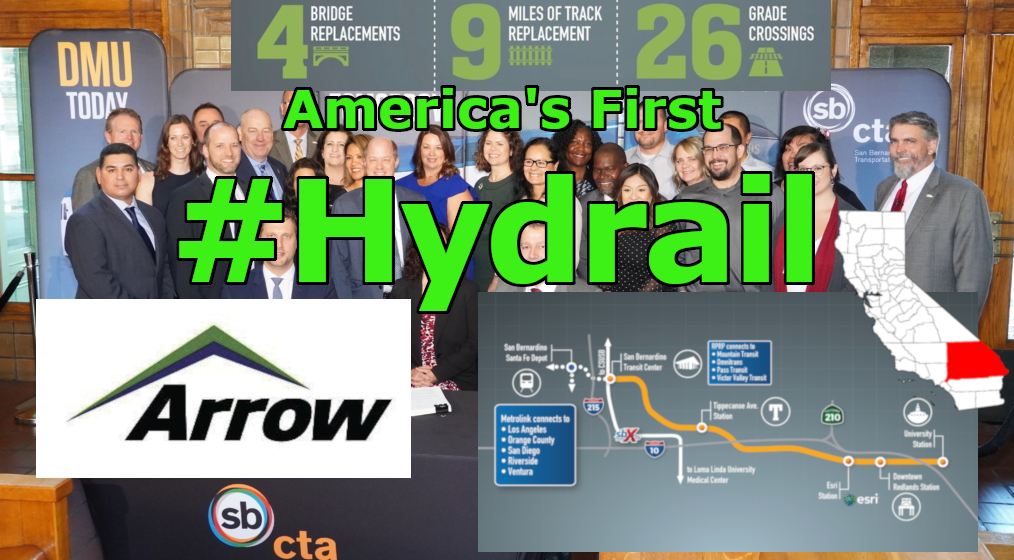Tag: fuel cells
-

NorCal Zero Project
It is a milestone day for hydrogen refueling. The Center for Transportation and the Environment announces the inauguration of the NorCAL ZERO project. This new station can serve up to 200 Class 8 heavy duty trucks per day. It has a capacity of 4,000 kilograms of LH2. The station also can refuel class 1 vehicles and…
-

Zero Emission Ammonia Production from Green Hydrogen
RMP’s new post about Zero Emission Ammonia Production from Green Hydrogen examines where we are in August 2020 with regard to scaling production of green hydrogen for green ammonia. Green Ammonia pilot projects are ongoing around the world but in this post, we examine why Australia is the world leader in green ammonia & how…
-

USA & CANADA QUARTERLY H2 INFRASTRUCTURE UPDATE 2020-Q1
RMPs USA & CANADA Quarterly H2 Infrastructure Report for Q1-2020 is off the press. The big story this Q is the new microgrid approval for Toyota’s Project Portal project. Also covered is the opening of the largest fast refueling h2 station in the USA at the Orange County Transit Authority located where MacArthur Blvd bisects…
-

USA’s First Hydrogen Passenger Rail – San Bernadino California
The Redlands Rail Project has commenced in California and soon will host the USA’s first hydrogen powered train. Not only that, Michigan State University played an important role in helping the San Bernadino County Transportation Authority decide on using hydrogen fuel cells. Click through to learn more about the first #hydrail project in America &…
-

USA & CANADA QUARTERLY H2 INFRASTRUCTURE UPDATE 2018-Q4
We end 2018 with 3 new hydrogen refueling stations opening in California in the last week of the year. We have 22 stations planned to open in California in 2019. Click through to read about hydrogen infrastructure updates in the USA & Canada in 2018-Q4 and our outlook into 2019.
-

General Motors Defense LLC – Full Size Fuel Cell Pickup Truck – The ZH2
GM Defense LLC was recently launched & the new ZH2 full size pickup truck platform was introduced at AUSA in Washington DC. In this post, RMP takes a look at the new full size fuel cell vehicle & it’s impressive stats. Click through to check out some pictures & a couple cool videos of these…
-

USA & Canada Quarterly H2 Infrastructure Update 2018-Q3
Check out RMP’s latest new post covering hydrogen infrastructure developments occurring over the past three months from June 30, 2018 to September 30, 2018. In this quarter’s report we look at two new public hydrogen stations that opened in Hawaii & Vancouver British Columbia. Click here to read all about how hydrogen fuel cell infrastructure…
-

Quarterly USA H2 Report Becomes Quarterly USA & Canada H2 Report
RMP is based near Detroit, Michigan. The Detroit River separates the City of Detroit & the City of Windsor. The Ambassador Bridge connects the two cities and soon the Gordy Howe International Bridge, a once in a generation undertaking, will be a second major bridge connecting the two cities. Windsor is my personal connection to…
-

USA Quarterly H2 Infrastructure Update 2018-Q2
H2 infrastructure is growing all across the USA and especially in California. New H2 stations are planned all across the East Coast too. RMP will now regularly be publishing a quarterly update of H2 infrastructure all across the USA to keep our readers informed of what’s going on. Check out our USA H2 Infrastructure Quarterly…
-

December 2017 – USA Public H2 Fueling Station Update
RMP will be publishing regular updates of our public hydrogen infrastructure map and data starting with this very post. Want to know what’s new with H2 infrastructure? Want to see the exact location of every public & private FCEV fueling location in America? Click through to read this post and check out RMP’s map.
-

Coal Use Forecasted To Rise – How We Can Mitigate Coal Pollution
Coal use is growing across the world. Coal will eventually surpass oil as the #1 primary energy source for world energy consumption. Over 1.3 billion people around the world do not have electricity and they will be planning on building coal fired power plants as a cornerstone to their energy plan. We can either understand…